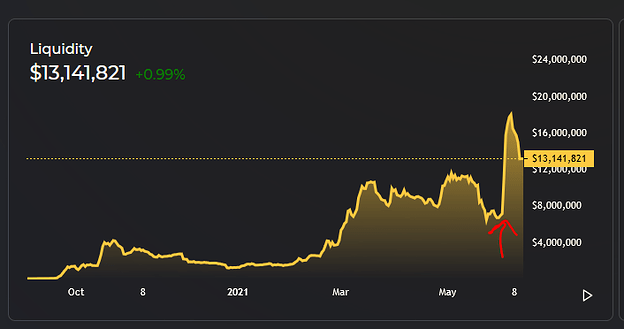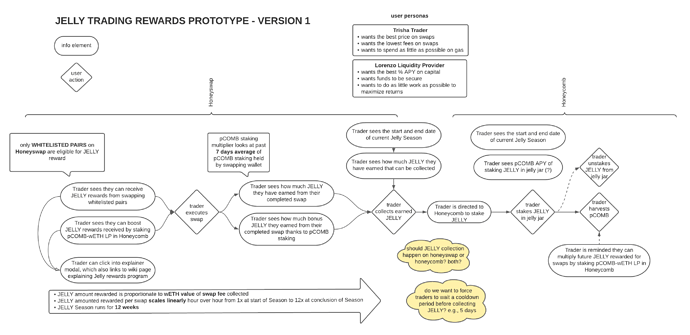tldr; We should run an experiment to determine whether we can effectively incentivize traders to favor using Honeyswap over other dexes for their swaps by offering token rewards that can be staked for COMB
Problem Statement: The Honeycomb xCOMB farming rewards program more than doubled liquidity in Honeyswap xDai pools (Total Value Locked went from ~$7MM to ~$17MM in a week). However, trading volume has not significantly changed. Unless we can find a way to drive more trading volume, the new liquidity that came to Honeyswap xDai will eventually migrate to other dexes where they stand to make more profits from trading fees or new liquidity farms.
Proposed Solution: In the same way that COMB is used to incentivize LPs to add liquidity to specific pools on Honeyswap, what if we incentivized traders to come make their swaps on Honeyswap rather than other dexes?
Here’s a basic outline of how it would work:
- Traders swapping whitelisted pairs would earn Royal Jelly (JELLY) tokens proportional to the swap’s $ value
- Once a week, a user can claim (harvest) the JELLY tokens they earned from the prior week’s trading. This would have the secondary benefit of creating a sticky behavior, driving them to return to the Honeycomb wallet.
- JELLY tokens could then be staked directly on the Honeycomb wallet.
- Staked JELLY tokens would earn COMB rewards that can be harvested, similar to how staked Honeyswap LP NFTs earn COMB rewards.
More details:
-
COMB rewards allocated to the JELLY trading rewards program would take the place of 1 or more LP COMB farm pairs.
-
Therefore, total COMB rewards available for JELLY would remain static and users would receive COMB in proportion to how much JELLY they have staked compared to the total amount of JELLY staked.
-
JELLY rewards pilot program would be scheduled to run for a 12-week “season.” Over the course of the first season, rewards would inflate in order to give late-coming traders an equal opportunity to claim COMB emissions from their staked JELLY and incentivize early traders to keep trading on Honeyswap. (Thanks to @luigy for pointing this out and providing a solution)
CRITERIA FOR SUCCESS:
I propose that we pilot the JELLY trading rewards program as part of the pCOMB Honeycomb farms launch on Polygon with a pCOMB allocation weight of 3
- Honeycomb xDai will serve as our control group in this experiment.
- We will know that the experiment has been successful if trading volume on Honeyswap Polygon increases to a higher proportion of TVL than the volume / TVL ratio on Honeyswap xDai post launch
What do you think? How could this program be improved? Are there any risks or concerns that we should account for?



